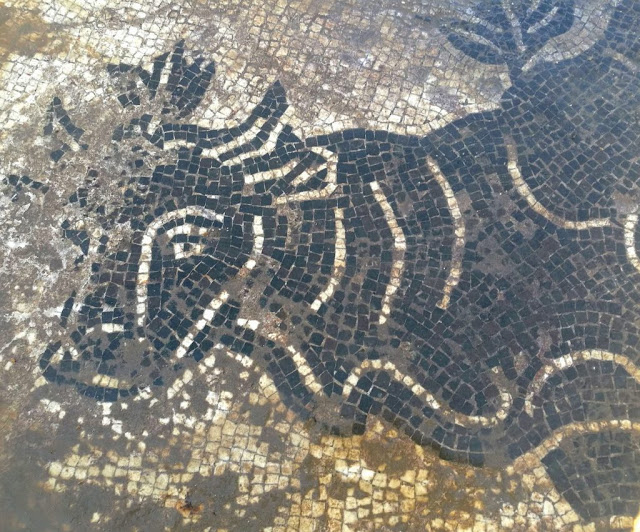Roman Baths Emerge On The Banks Of The Cosa River In Frosinone
The remains of Roman imperial-era baths have been discovered in Frosinone, 50 miles southeast of Rome in central Italy. The complex on the left bank of the Cosa river retains sections of black-and-white mosaic floors and marble cladding lining a rectangular pool.

The baths were discovered last month during a preventive archaeology survey at the site of planned sewer work on the Ponte Della Fontana, a street named after the Roman bridge, long-since obliterated by flooding, that once crossed the Cosa river at this spot.
Very few remains from the Roman city have survived, and while Frosinone was known for its rivers and mineral springs in antiquity, there are no ancient sources documenting baths, so the discovery comes as a total surprise to archaeologists. It’s also the first archaeological evidence that the imperial Roman town occupied the left bank of the river.

Found just a few inches under street level, the surviving mosaic floors can be dated by their style to the 2nd century A.D.
The black-and-white mosaics adorning the floor of a large room depict mythical marine creatures and deities, including a taurocampus (a fish-tailed bull), a hippocampus (fish-tailed horse) over whom looms the god Triton, son of Poseidon, blowing a conch shell like a trumpet. There are others visible as shadows under a layer of plaster.
At one end of the large room is a pool lined in marble. A large proportion of the cladding is extant, as are bronze staples used to affix the marble slabs to the walls of the pool.
The pool also had a mosaic floor, albeit not a figural one; just a monochromatic white. There are patches evident from repairs done in antiquity.
The large mosaic floor also has a number of patches where tesserae were lost and squares of marble and larger, more roughly-cut tiles in varying sizes were used to fill in the blanks.

A smaller room adjacent to the large one also had a mosaic floor, although from what we can tell there were no figural motifs. It was white tile with a thick black border.
The function of this space cannot be determined, as most of the room was lost when the baths were destroyed.
Archaeologists believe their source of water was the ultimate cause of their demise. The Cosa changed course in later antiquity, shifting 30 feet and taking a bunch of the bath complex with it.
Excavations of the site are ongoing and cultural patrimony officials plan to conserve the mosaics and marble walls in situ. The remains will be covered and secured. The ultimate goal is to include them in a future Cosa River city park.





